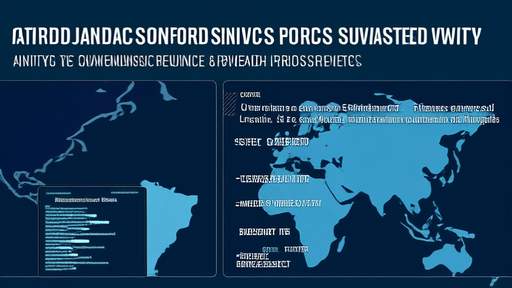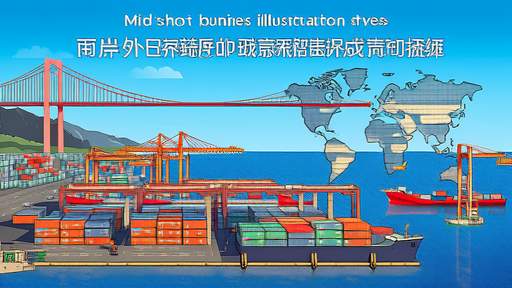The global semiconductor industry is undergoing a profound geographical reshuffling as geopolitical tensions and technological rivalries rewrite the rules of supply chain security. What was once a highly specialized and interdependent ecosystem is now fracturing into competing blocs, with nations racing to establish self-sufficiency in chip production. This realignment isn't merely about economics—it's a high-stakes reordering of technological sovereignty that will define the balance of power for decades to come.
At the heart of this transformation lies the uneasy recognition that semiconductors have become the new oil. From smartphones to fighter jets, advanced chips underpin both economic competitiveness and national security. The COVID-19 pandemic exposed the fragility of concentrated supply chains when a shortage of $1 chips idled factories producing $50,000 cars. But it was the escalating tech cold war between Washington and Beijing that accelerated the industry's Balkanization, with export controls and domestic subsidy programs pulling the sector in contradictory directions.
East Asia's decades-long dominance in semiconductor manufacturing now faces unprecedented challenges. Taiwan alone produces over 60% of the world's most advanced chips through TSMC, while South Korea's Samsung and SK Hynix control nearly 70% of memory chip production. This concentration created efficiency miracles but also single points of failure. The specter of military conflict over Taiwan—through which 90% of the world's cutting-edge chips pass—has triggered contingency planning that's reshaping global investment flows. Companies that once optimized purely for cost and capability now must factor in geopolitical risk assessments when placing billion-dollar fab projects.
The United States has emerged as the most aggressive architect of this geographical restructuring. The CHIPS Act's $52 billion in subsidies represents more than just industrial policy—it's an attempt to rewire the semiconductor ecosystem's DNA. Intel's ambitious foundry roadmap and TSMC's Arizona fabs symbolize this pivot, though the transition won't be seamless. American firms excel at chip design but lost leading-edge manufacturing capabilities years ago. Rebuilding this expertise requires more than concrete and equipment; it demands the recreation of entire ecosystems of materials suppliers, equipment vendors, and specialized labor pools that migrated to Asia over thirty years.
Europe's semiconductor strategy reflects its unique positioning between American decoupling and Chinese engagement. The EU Chips Act commits €43 billion to double Europe's global market share to 20% by 2030, focusing on legacy nodes crucial for automotive and industrial applications. Unlike the U.S., European policymakers emphasize "de-risking" rather than decoupling from China, with German automakers and Dutch equipment suppliers maintaining significant Chinese exposure. This middle path creates its own tensions, particularly as ASML navigates increasingly complex export control regimes on its cutting-edge EUV lithography machines.
China's response to these shifts combines massive domestic investment with creative workarounds to technological containment. SMIC's surprise 7nm breakthrough in 2022 demonstrated Beijing's capacity for technological leapfrogging, even as it remains generations behind in EUV capabilities. The maturation of China's semiconductor equipment suppliers like AMEC and Naura poses a long-term challenge to Western dominance, though quality and yield issues persist. More immediately concerning for competitors is China's growing dominance in legacy node production—the workhorse chips that power everything from refrigerators to power grids—where it's leveraging scale advantages to reshape global pricing dynamics.
The geographical reorganization extends beyond traditional manufacturing hubs. Southeast Asia has emerged as a critical battleground in supply chain diversification, with Malaysia, Singapore, and Vietnam attracting record semiconductor investments. These countries offer neutral ground for firms navigating U.S.-China tensions, combining established infrastructure with relatively stable geopolitical positioning. Meanwhile, Japan is staging a quiet comeback through materials science leadership and partnerships like Rapidus' ambitious 2nm project, leveraging decades of experience in specialty chemicals and precision manufacturing.
This fragmentation comes with enormous costs that challenge the semiconductor industry's historical economics. Maintaining parallel supply chains across regions duplicates capital expenditures while reducing economies of scale. The semiconductor equipment industry—already stretched by record demand—must now support multiple geographically distinct expansion projects simultaneously. Perhaps most consequentially, the division of technological ecosystems risks slowing the pace of innovation that has driven Moore's Law for half a century. When research and development resources scatter across competing national projects rather than concentrating on pushing technological boundaries, progress becomes more expensive and less predictable.
The human capital dimension of this reshuffling may prove the most difficult bottleneck to overcome. Building a cutting-edge fab requires thousands of highly specialized engineers and technicians—skills that can't be quickly replicated through training programs. Taiwan's chip supremacy rests as much on its deep talent pools as on its technological capabilities, cultivated through decades of focused education and industry-academia collaboration. As Arizona, Ohio, and Dresden compete to host new semiconductor hubs, their success will hinge on attracting global talent and rapidly upskilling local workforces—a challenge magnified by restrictive immigration policies in key Western markets.
What emerges from this turbulent reorganization may resemble neither complete decoupling nor a return to unfettered globalization, but rather a new kind of "constrained interdependence." Certain segments of the value chain—particularly around legacy nodes and packaging—may remain globally integrated, while cutting-edge logic chips see parallel but separate ecosystems develop. The semiconductor industry has always balanced competition and collaboration; the coming decade will test whether this balance can be maintained when national security concerns dominate decision-making. One thing appears certain: the geography of microelectronics will never look the same again.

By /Jun 3, 2025

By /Jun 3, 2025

By /Jun 3, 2025

By /Jun 3, 2025

By /Jun 3, 2025

By /Jun 3, 2025

By /Jun 3, 2025

By /Jun 3, 2025

By /Jun 3, 2025

By /Jun 3, 2025

By /Jun 3, 2025

By /Jun 3, 2025

By /Jun 3, 2025

By /Jun 3, 2025

By /Jun 3, 2025

By /Jun 3, 2025

By /Jun 3, 2025

By /Jun 3, 2025

By /Jun 3, 2025

By /Jun 3, 2025